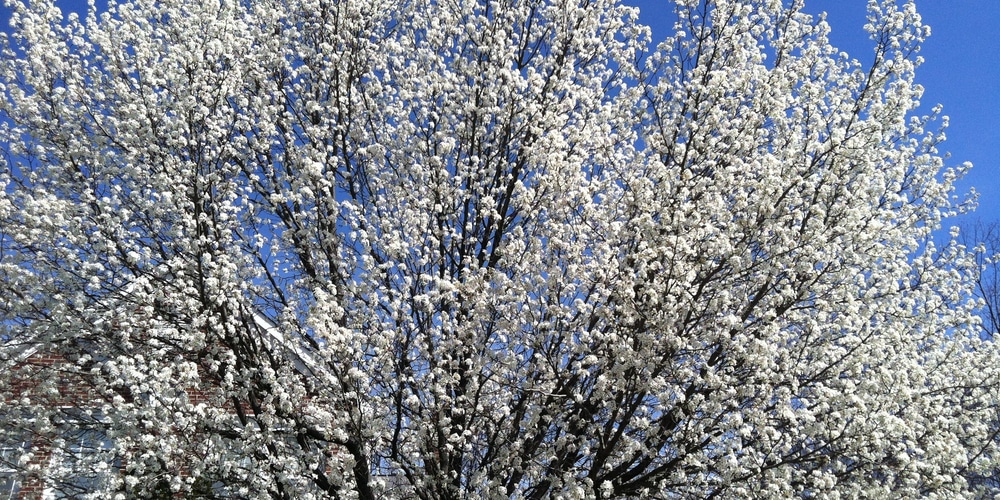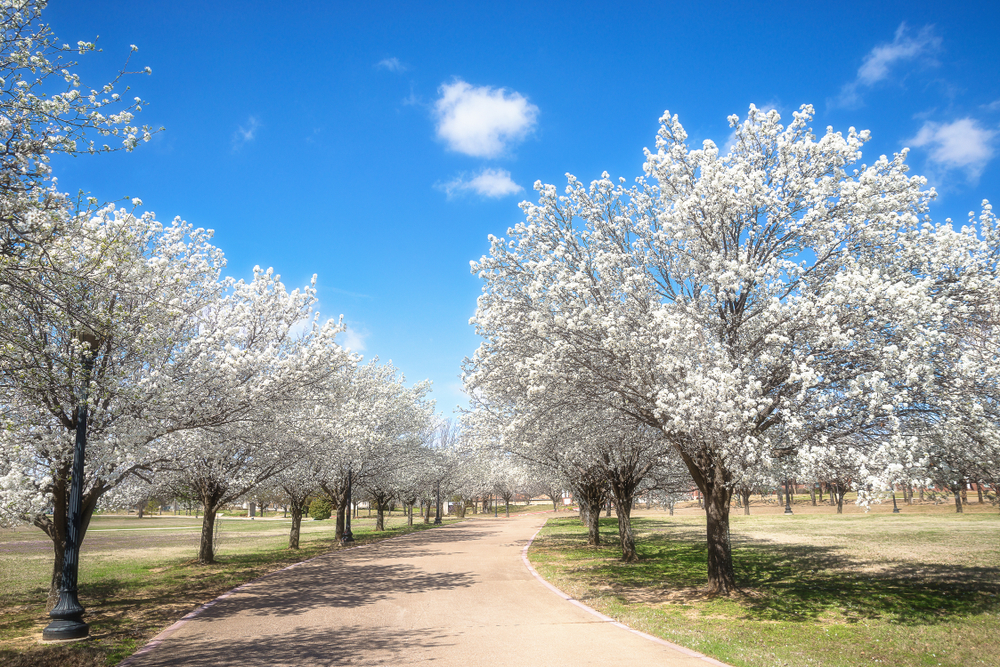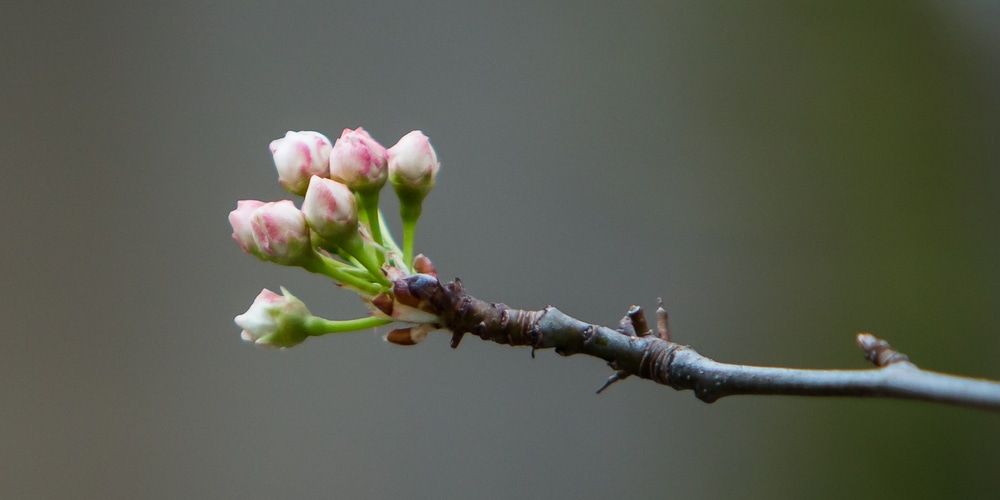Not all pear trees are the same. Exploring the attributes of tree varieties can provide more insight into their growth, growing requirements, and appearance. So, if you are in the market to add a pear tree to your landscape, knowing the differences between the Cleveland Pear vs Bradford Pear trees will help you make the best choice.
Inedible Fruit Trees

Pear trees require multiples to bear fruit and will remain sterile if you plant them alone. However, the fruit the Cleveland Pear and Bradford Pear produce are not the large tasty pears you find in your local grocery.
The Cleveland Pear does not produce any fruit or seeds during its growing cycle. In contrast, the Bradford Pear offers seed pods rather than fruit.
These pods are not edible by humans, although birds, chipmunks, and other creatures will feast on them and carry seeds around. Cleveland and Bradford Pear trees are strictly for ornamental purposes when homeowners add them to a yard rather than for edible fruit.
Cleveland Pear vs Bradford Pear: Size and Shape

The Cleveland Pear is a fast-growing tree but remains slightly smaller than its alternative, the Bradford Pear tree. It will reach between 30 and 40 feet when mature, with a canopy spread of approximately 15 feet wide. It takes on a pyramid form when fully grown.
The branches on a Cleveland Pear tree are evenly spaced and close together to help give it stability and structure during high winds, snowfalls, and extreme weather conditions.
Alternatively, the Bradford Pear tree will grow between 30 and 50 feet at maturity, spreading 20 to 30 feet across. It stands erect, and its canopy is more oval-shaped. However, this impressive size does not mean it is better than the Cleveland variety.
Bradford Pear trees have condensed angled spacing between the trunk and the many branches. This stature puts the large tree at risk for breakage during high winds and extreme weather. In addition, the limbs will often break off the truck and can split the tree into two parts.
Foilage and Flowers
Because the Cleveland and the Bradford Pear trees are ornamental, they are very showy and can make an excellent addition to any yard. Their foliage is dark green and makes an ideal shade spot for homeowners. While both varieties will sport colorful fall foliage of red, orange, and purple hues, the Brandford stands out as a more vibrant tree during autumn.
Both trees will produce an abundance of white flower clusters every spring. However, the smell of these flowers is not pleasing. Some descriptions of the aroma include dead fish, sewage, and a rotting smell, making it less than ideal for a common area during its blooming season.
When comparing the Cleveland Pear vs Bradford Pear, the Cleveland variety will offer more exuberant blooms than its alternative.
Growing Requirements
Finding an ornamental tree that can withstand your current climate is vital for longevity. While these tree varieties can handle varying conditions, they will grow best in neutral or slightly acidic soil with a pH level between the 6.0 to 7.0 range. Therefore, homeowners should plant them in loamy, sandy soil with ample drainage so they do not sit in stagnant water.
The Cleveland Pear tree thrives best in USDA climate zones 4 through 8, whereas the Bradford Pear is not as forgiving and prefers climate zones 5 through 8.
Cleveland Pear vs Bradford Pear Ornamental Trees
Some regions consider the Bradford Pear tree invasive and do not sell it or promote its planting. If you are unsure about your local restrictions, you should contact your local agriculture office before adding any permanent trees to your property.
